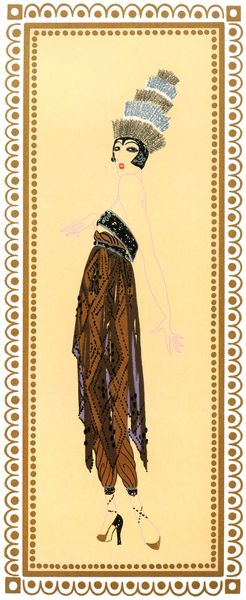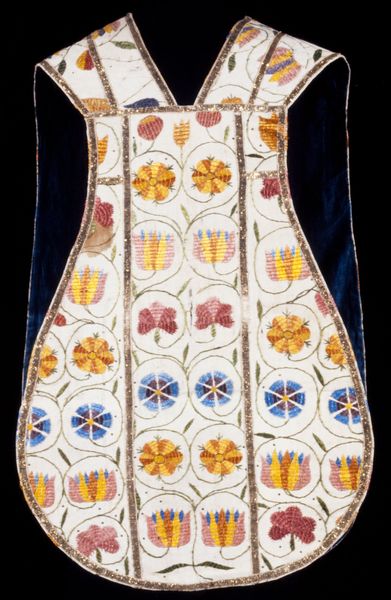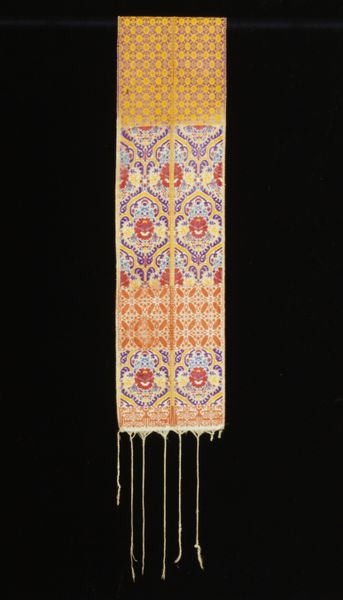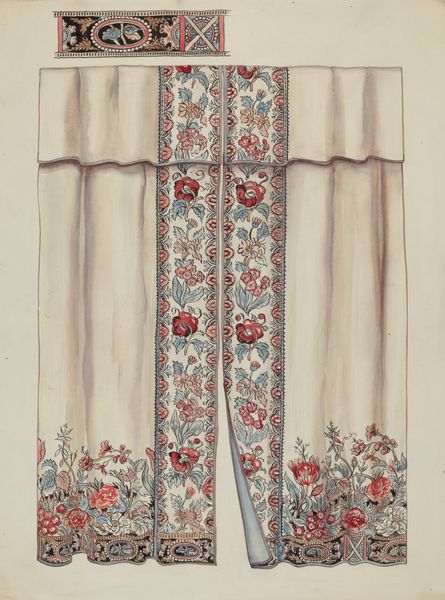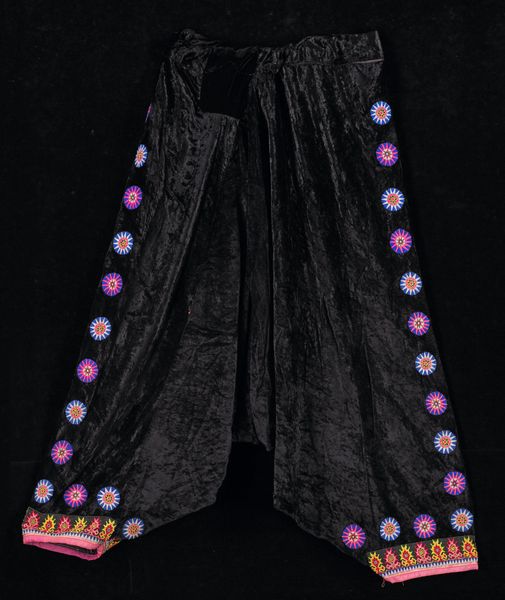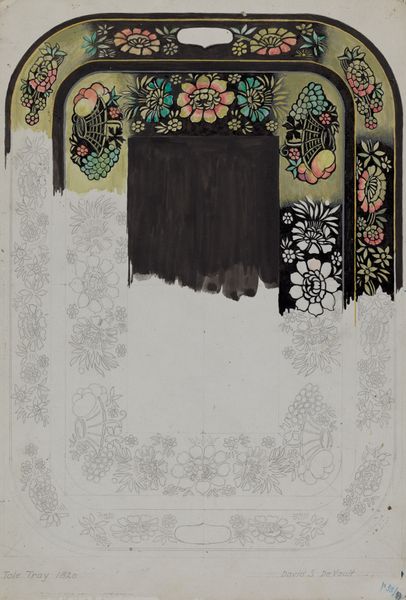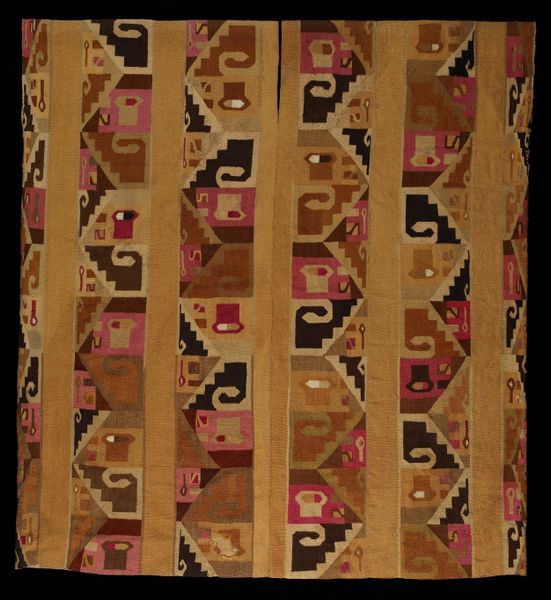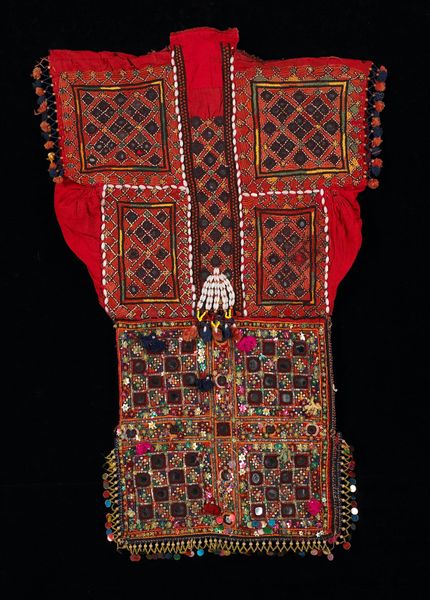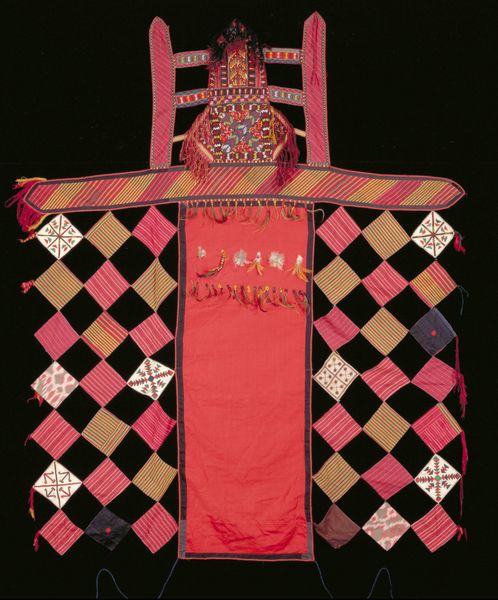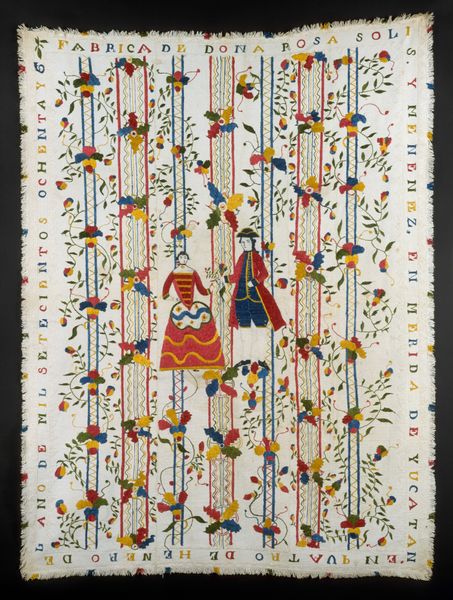
fibre-art, textile, cotton
#
tribal design
#
fibre-art
#
textile
#
collage layering style
#
fashion and textile design
#
geometric pattern
#
hand-embroidered
#
pattern repetition
#
cotton
#
textile design
#
beaded
#
decorative-art
#
imprinted textile
#
layered pattern
Copyright: Public Domain
Editor: These are a Pair of Sleeves, created sometime between 1900 and 1925 by an anonymous artist. The material is cotton, and they’re currently housed here at the Minneapolis Institute of Art. I’m struck by the vibrant hand-embroidered geometric patterns on what seems to be a simple textile. How do you interpret the purpose and cultural context of these sleeves? Curator: This textile art offers a fascinating glimpse into the intersection of fashion, identity, and cultural expression. Think about how clothing, especially something as specific as decorated sleeves, operates in society. It's not just about functionality, right? It becomes a signifier of status, origin, perhaps even belief systems. The hand-embroidered geometric patterns, along with the beading, suggest a painstaking process, likely imbued with social significance within its original community. Editor: So, beyond the obvious aesthetic appeal and functionality, you're saying these sleeves acted almost like a form of communication? Curator: Precisely! Consider the period. The early 20th century was a time of tremendous social and political upheaval across the globe. Textiles like these become powerful symbols, silently resisting the homogenizing forces of colonialism and global capitalism by reaffirming local traditions and artistic practices. What kind of community do you envision producing such work? Editor: One that values intricate craftsmanship and shared visual language... I'm now considering the role of women in creating such textiles. Were they spaces for artistic expression and possibly economic empowerment? Curator: Absolutely. Historically, textile production is often associated with women's labor. In many societies, weaving and embroidery are skills passed down through generations. Therefore, such artworks served not just practical or aesthetic needs, but also supported women and strengthened communal bonds. This pair of sleeves is a tangible manifestation of those dynamics, silently showcasing skill, resilience, and cultural pride. Editor: This really shifted my understanding. I initially viewed these sleeves as beautiful, but now I see them as embodying a complex web of cultural and social meanings. Curator: Exactly. It reminds us that art isn't created in a vacuum, and museums aren't either. They hold histories, negotiations of power and meaning that need to be unpacked to really 'see' these items for all they were and continue to be.
Comments
No comments
Be the first to comment and join the conversation on the ultimate creative platform.
